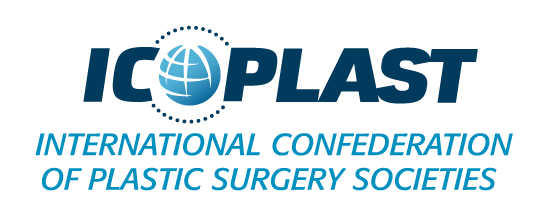This technique is for women who have suffered an amputation of one or both breasts and who want to regain their femininity and figure.
It is normal that although only one breast is reconstructed, the healthy breast is also planned to be modified to have reasonable symmetry.
Reconstruction entails various operative times due to the need of a second operation which is quite probable.
The procedure lasts for 2 or 4 hours.
Admission at the clinic for 24 hours.
Stitches are removed in15 days.
General anaesthetic is used.
Shower in 48 hours.
During the post-operative period avoid brusque movements and arm lifting.
No smoking for 15 days before the operation.

The second phase prioritised in reconstruction, aesthetic refining and the disappearance of morbility in the procedures, it was here where experiences with textured anatomical expanders both temporary and permanent were published, also the free flap and fundamentally mastectomy with conservation of the skin.
The surgical techniques proposed to face the above problems are classified atthe lower end of the general term “Oncoplastic surgery”,a term used by Audretsch in 1994 and was redefined later on by Bostwick as “ specific and immediate reconstruction for a certain group of tumours.
The surgeon that does the reconstruction must be a plastic surgeon (SIGN Guidework of Management of Breast Cancer in Women)
In order to try to classify reconstructions we see what they can be:
Autologous: when your own tissue is used.
Heterologous: when a foreign object is used such as expanders.
Combination: when both resources are used.
There is an array of breast reconstruction techniques available which can be used. The choice of one or more comes from the individual characteristics of each patient, of which we can find:
- The previous type of Mastectomy
- Patient’s desires and expectations.
- Condition of health.
- La cubierta cutánea.
- The cutaneous coverage
- The firmness or not of the greater pectoral muscle.
- The patient’s age.
- If the patient has had radiotherapy previously or not.
- Weight and obesity.
- Previous procedures recieved.
- Etc.
Immediate breast reconstruction (IBR)
It is done during the same procedure as the mastecomy.
Deferred breast reconstruction (DBR)
It is done after completing chemotherapy and radiotherapy treatments.
The implants
In general terms, the use of these are limited in immediate reconstruction; they are preferred for mastecomies with conservation of the skin and for patients with small breasts.
Good skin quality, quantity and subcutaneous cellular tissue is necessary. The pectoral muscle must be intact and undamaged. This is due to the difficulty to achieve symmetry and good positioning of the breasts with these materials.
The expanders
In 1982, Radovan presented the first experience in breast reconstruction with expander prostheses. It meant stretching the skin bit by bit in a certain amount of time, this is the purpose of the expander, and afterwards a final prostheses is positioned. Expanders can be temporary or permanent.
The temporary, once its course of expanding has finished, it is removed and replaced with an implant.
The permanent one expands then it stays because it has a silicone gel cover and a cavity inside to be filled with a saline solution through a valve.
The expansion process of the skin lasts about two months.
Next, to maintain and stabilize the expanded skin which proceeds to a second surgery to replace the temporary expander for a permanent prostheses, correction of symmetry and reconstruction of the areola-nipple complex.
For reconstructions using a permanent expander, only the correction of the areola-nipple complex is done.
The Latissimus dorsi muscle.
The latissimus dorsi muscle uses more an overlying skin area, it covers the post-mastecomy flaws left by the use of expanders and implants, it is a new breast of excellent quality.
Reconstruction of areola-nipple complex
This is the last step in breast reconstruction.
Firstly the nipple is reconstructed with its own tissue and then a full thickness skin graft for the areola.
Complications
All surgical procedures run inherent risks which include haemorrhage and infection.
The haematoma occurs in 1.5% of all cases.
Infection has an incidence rate of 2.2%
seroma
Capsular contracture varies between 6 and 10%.
A leak or rupture of an expander, because it focuses on the outer of the skin which is very worrying and it occurs in 2% of all cases.
Asymmetry
The complication increases if there has been previous radiotherapy.
